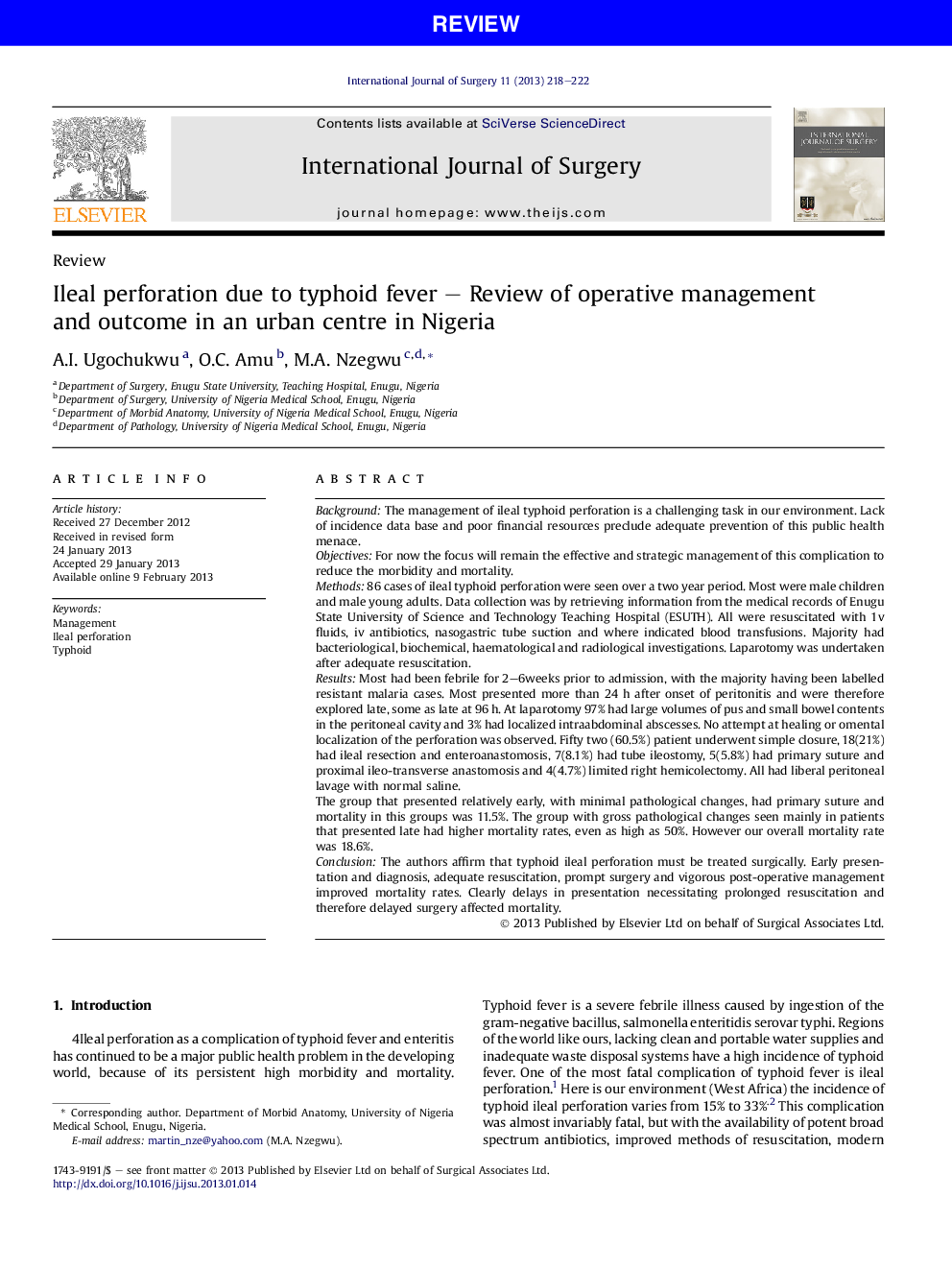| Article ID | Journal | Published Year | Pages | File Type |
|---|---|---|---|---|
| 4286791 | International Journal of Surgery | 2013 | 5 Pages |
BackgroundThe management of ileal typhoid perforation is a challenging task in our environment. Lack of incidence data base and poor financial resources preclude adequate prevention of this public health menace.ObjectivesFor now the focus will remain the effective and strategic management of this complication to reduce the morbidity and mortality.Methods86 cases of ileal typhoid perforation were seen over a two year period. Most were male children and male young adults. Data collection was by retrieving information from the medical records of Enugu State University of Science and Technology Teaching Hospital (ESUTH). All were resuscitated with 1v fluids, iv antibiotics, nasogastric tube suction and where indicated blood transfusions. Majority had bacteriological, biochemical, haematological and radiological investigations. Laparotomy was undertaken after adequate resuscitation.ResultsMost had been febrile for 2–6weeks prior to admission, with the majority having been labelled resistant malaria cases. Most presented more than 24 h after onset of peritonitis and were therefore explored late, some as late at 96 h. At laparotomy 97% had large volumes of pus and small bowel contents in the peritoneal cavity and 3% had localized intraabdominal abscesses. No attempt at healing or omental localization of the perforation was observed. Fifty two (60.5%) patient underwent simple closure, 18(21%) had ileal resection and enteroanastomosis, 7(8.1%) had tube ileostomy, 5(5.8%) had primary suture and proximal ileo-transverse anastomosis and 4(4.7%) limited right hemicolectomy. All had liberal peritoneal lavage with normal saline.The group that presented relatively early, with minimal pathological changes, had primary suture and mortality in this groups was 11.5%. The group with gross pathological changes seen mainly in patients that presented late had higher mortality rates, even as high as 50%. However our overall mortality rate was 18.6%.ConclusionThe authors affirm that typhoid ileal perforation must be treated surgically. Early presentation and diagnosis, adequate resuscitation, prompt surgery and vigorous post-operative management improved mortality rates. Clearly delays in presentation necessitating prolonged resuscitation and therefore delayed surgery affected mortality.
